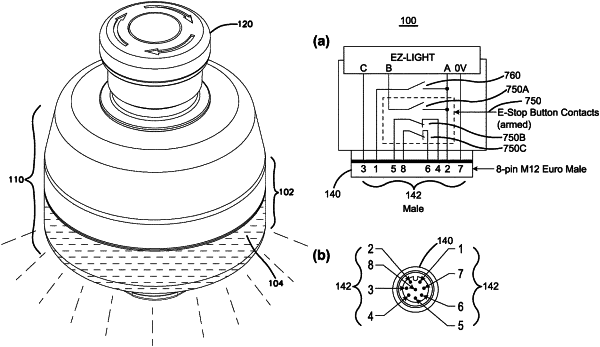| CPC H01H 3/022 (2013.01) [H01H 9/161 (2013.01); H01H 13/023 (2013.01); H05B 47/10 (2020.01)] | 20 Claims |

|
1. A switch, comprising:
a housing having a sidewall comprising an optical indicator portion having an externally visible annular illumination surface substantially surrounding, and facing away from, a longitudinal axis;
a switching module comprising an actuator adapted to be manually actuated to move relative to the housing along the longitudinal axis from a first position to a second position;
an internal circuit enclosed in the housing and comprising:
an illuminating device adapted to illuminate the externally visible annular illumination surface; and
a plurality of pairs of contacts,
at least a first one of the plurality of pairs of contacts being connectable to one or more circuits external to the housing and adapted to change an operational state of the one or more circuits when the actuator is manually actuated, and
at least a second one of the plurality of pairs of contacts being connected to the illuminating device and adapted to cause the illuminating device to emit light of different states of illumination corresponding to the respective positions of the actuator;
wherein the first position is an armed position, at which the switching module permits the one or more circuits external to the housing to continue operation, and the second position is an actuated position, at which the switching module causes the one or more circuits external to the housing to cease operation.
|